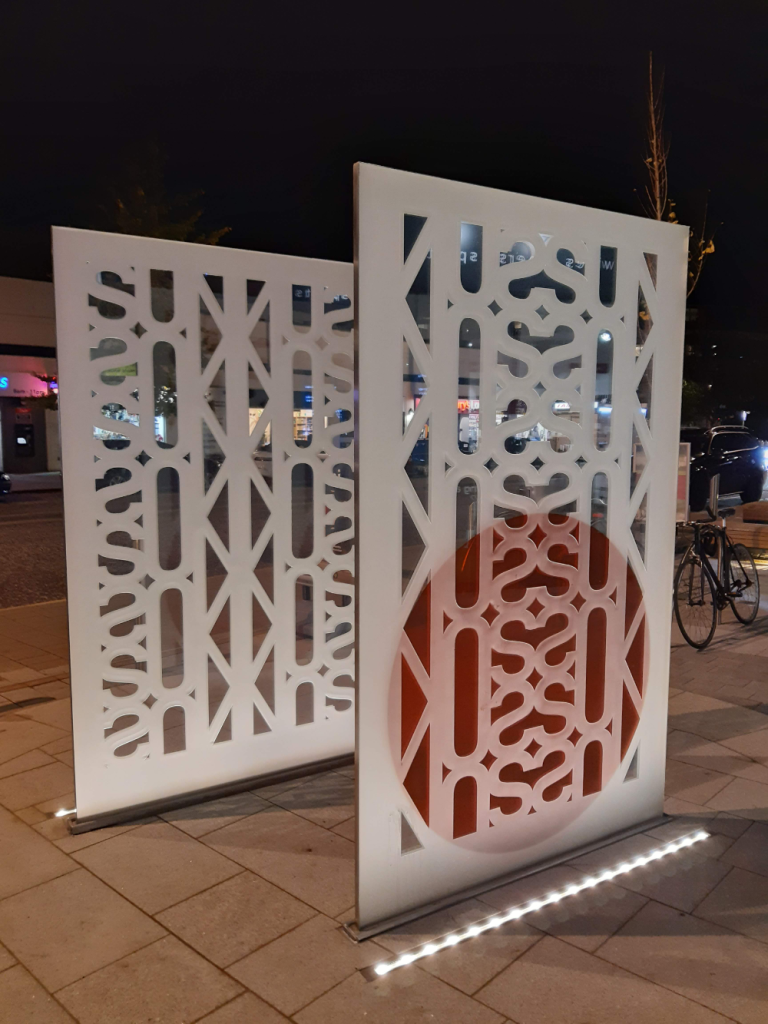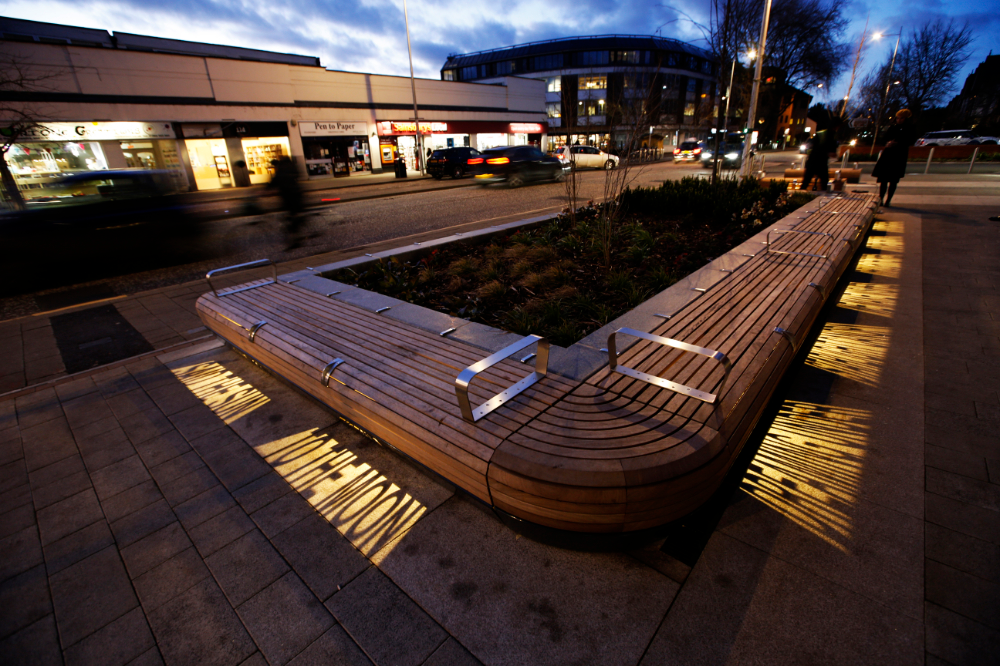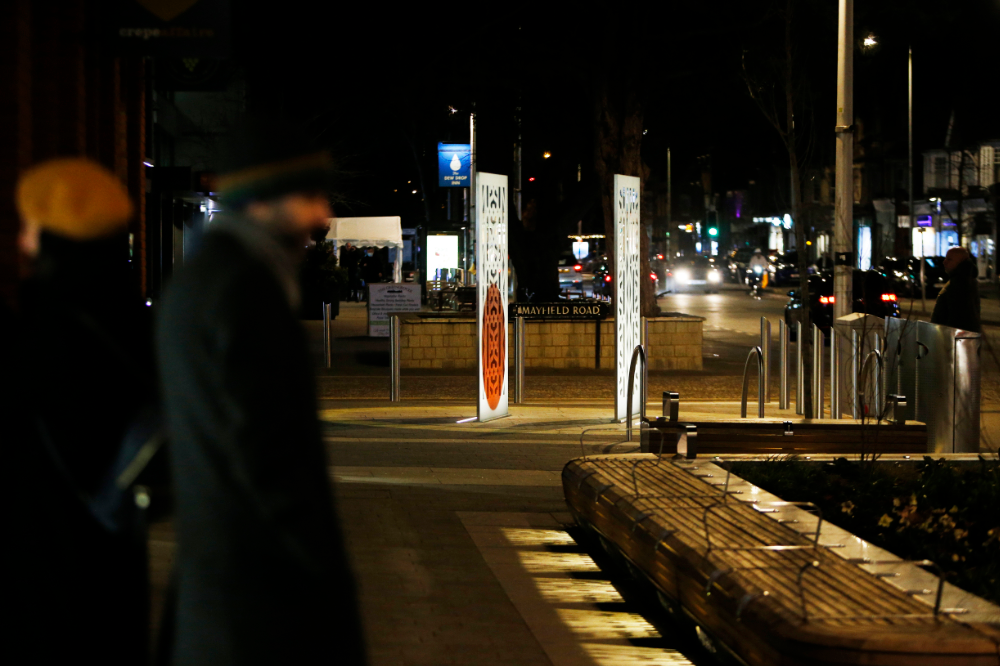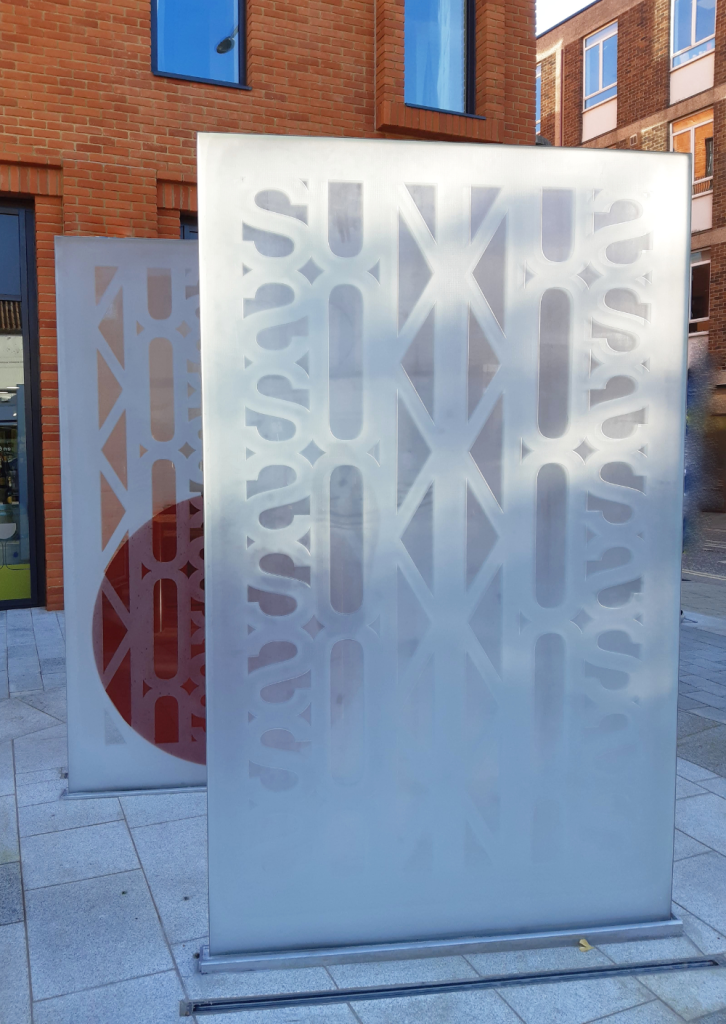Tolkien-inspired art installation “Between the Sun and the Moon” – an interview with artist Elisa Artesero

I have visited Oxford dozens of times by and due to the fact that I cannot spend gazillions of euros on my choice of accomodation I have seen quite a few places that are a bit further off and one of them is Summertown. Well-known for its shopping and gastronomy to both sides of Banbury Road I noticed an art installation I had not seen before and decided to ask its artist, Elisa Artesero, about it. This is our interview on her award-winning work Between the Sun and the Moon.

Would you be so kind as to say a few words about you as an artist and your projects in general?
I am a contemporary visual artist based in the UK. I use light and text in spatial environments to address themes of transience, the nature of happiness and hope, and as much of my work is in the public realm, this means that the way people encounter, understand, and interact with it is of paramount importance. The purpose of most of these pieces is to slow people down from their distracted daily life experiences and be more present in the moment, and I use light, text art and poetry to do this.
I’ve been fortunate in that I have had the opportunity to create work for some interesting sites across UK and abroad, including Paris, the Faroe Islands, and even projecting the words ‘Tonight We Dream’ onto a mountainside in Iceland. Other project highlights include interactive shadow screen and large-scale letters installation ‘DREAMERS’ at the Durham Lumiere Festival, and ‘The Garden of Floating Words’ which are neon words that appear to be floating in the dark on permanent display outside 70 St Mary Axe in London and as part of Sculpture in the City.
DREAMERS from Elisa Artesero on Vimeo.

Now, recently you have been able to unveil this beautiful installation as well as another part of your “The Stories Under Our Feet” series. I would imagine that the COVID pandemic will have been a huge stumbling block on such work?
The pandemic certainly slowed the process down! I was fortunate in that I was able to make my visits to Oxford and Summertown to do research, and really get a feel and inspiration for the place just two weeks before the first lock down, so I had a lot of what I needed to work with throughout the pandemic. The pandemic slowed down the progress of the whole development and the opening was pushed back by over a year. However, this extra time gave me the opportunity to really sit with the book and my research for longer than perhaps I would have had otherwise, allowing the work and poetry to evolve in a more organic way.

Could you explain to someone yet unfamiliar with your work how your process of inspiration worked on this piece? You mentioned that the “spatial layout takes symbolic inspiration from the iconic front cover [of ‘The Hobbit’]”? And where does the text to “The Stories Under Our Feet” come from?
Tolkien lived in the area, and even though other many talented writers also lived there, I chose his work to be the inspiration for my artwork and seemed fitting for the location. The Hobbit holds a special place in my heart, as I was introduced to it by my mum as a child, and re-reading it as an adult I still find the world Tolkien created to be so fascinating and inspiring, also lending itself to themes I address within my own artwork.
Looking at the space available, I had to imagine how people might encounter the work, and how I might be able to tell a story, that isn’t specifically The Hobbit, but is inspired by elements in the work. Here, I came upon the original book cover layout, in which, when laid out flat, the Moon and the Sun are seen in the sky – Durin’s Day, the dwarves’ new year. From this, I decided that this installation could be a conversation between the Sun and the Moon, one which comes to life at twilight/night when the words emerge as light and shadow text from underneath the benches. These words are a poem I wrote especially for the space, the conversation may be between the Sun and Moon, but it can also be viewed as speaking directly to the visitor with the starting words “Meet me here…”
Layout-wise, it can be read from one side to the other and back again on the standalone benches, really playing with the text position in space, which has different opportunities, limitations, and interpretations from a poem on a page.
My hope is that the installation can be encountered and appreciated by visitors with or without knowledge of The Hobbit. It should stand alone as a piece of original artwork and writing. For those who really enjoy the book, though, there are other subtle references within the work. I won’t specify which or where, as where is the fun in that! Ultimately, I hope to have made a work that adds a little bit of surprise and magic to the space, changing how a small piece of urban landscape can be designed and engaged with.

Do you think there is a particularly good time to visit your installation as it plays with light in so many different ways? I would imagine that at dusk the interplay might be most memorable?
As with a lot of my work, I like to create pieces that have subtle changes throughout the day, night, and even seasons. So my hope is that whatever time you go to see it, there will be something interesting. On a sunny day, the sun will cast the patterns of the sun sculpture across the floor, or, when the sun casts across the parallel panels, a symbolic magical gateway is formed. However, as you have pointed out, possibly the best time to see the transition is at twilight when the light and shadow words start to become visible, initiating the conversation between the Sun and the Moon…
Visit her official website: https://elisaartesero.com/
Congratulations on winning with the Oxford Preservation Trust Awards 2023!
Please note The interview was originally done in 2022. It is my fault it has taken so long for me to finally be able to publish it and with Elisa’s recent award on the installation it was highly overdue – my apologies!

1 Response
[…] and the Moon” in Summertown, Oxford. A personal report with additional photos on the blog post here at thetolkienist.com for my members over at […]